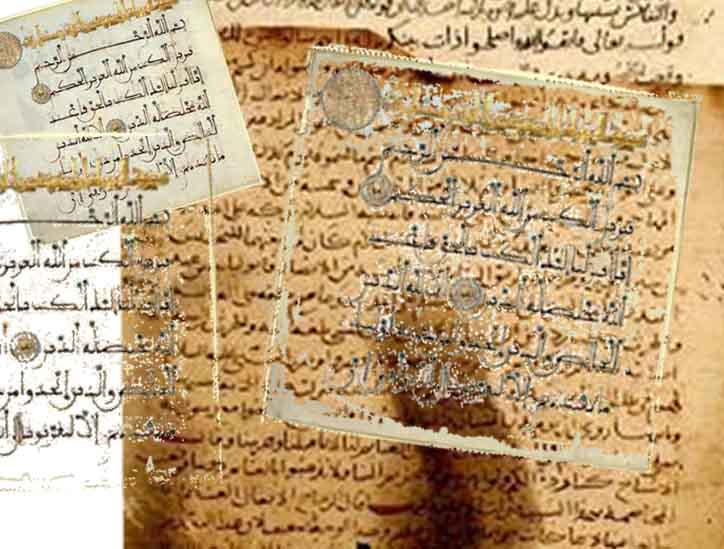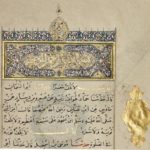
The impact of the highly changeable, reverential, apologetic mentality, has been dangerous and devastating for the Islamic intellectual and cognitive system, due to its annihilation of the critical approach through obstinacy. The absence of skepticism, questioning, and accountability still hinders the development of this system, and if the situation does not improve, the result will be marginalization and lack of any effective participation in the development of humanity.
THIS APPROACH of following, imitation, repetition and regurgitation is evident, and its results have become patent. Simply put, this is a path that contradicts human nature, a nature which is originally one of curiosity, since it makes a person eager to know what is around him. Is this not clearly obvious in the creation myth adopted by the Qur’ān in imitation of the earlier divine books, in particular the story of the Tree of Knowledge in the Garden of Eden? Even though God forbade Adam and Eve from approaching the Tree of Knowledge, the spouses preferred to have knowledge of something over ignorance of it, despite the painful repercussions: the pangs of child labour for Eve and exhausting toil for livelihood for Adam.
Orality
There are no original written and documented sources that can be referred to. All that has come down to us about the early history of Islam, of the Qur’ān and its codification, and the life and biography of the Prophet, is primarily oral.
The original sources for the Islamic heritage and narrative are based on hearsay and repetition over the generations – that is, a matter of statistical frequency. It escapes no one that the oral heritage, both religious and ideological, has been subject to exaggerations, additions, omissions, sacralisation and emendation, and indeed to distortion and adjustment in order to serve the interests of the authorities and the status quo, and ensure the continuity of the religion and expand the tally of its believers.
Such things apply to all religions, and Islam is no exception to this rule, despite the persistence of the mercurial, reverential, apologetic, mentality in denying this, and separating out Islam from the rule on the grounds that its Creator preserved it unsullied.
The original sources for the Islamic heritage and narrative are based on hearsay and repetition
In the eyes of all researchers, the oral Islamic sources remained relatively unreliable, since they were vulnerable to a plurality of factors, causes, tendencies or purposes. This is in addition to the phenomenon of cross-fertilization from other cultures and civilizations.
Credibility and reliability
Islamic sources retained a stamp of reverence and apologetic purpose. The recording of events and major incidents took place much later than their actual occurrence. The first known biography of the Prophet is attributed to Ibn Ishaq (80 AH – 699 AD / 151 AH – 769 AD), dates from 120 years following the death of the Prophet (10 AH – summer 632 AD), and has not reached us intact. What we have instead is a version of this biography revised and amended, according to its author Ibn Hisham (ob. 218 AH / 834 AD), who acknowledged that he had amended and revised Ibn Ishaq’s work and removed from it unpleasant elements that might act to defame the personality of the Prophet Muḥammad.
Likewise, the hadiths were not written down during the life of the Prophet, who actually forbade and prevented them from being written down, as the Islamic narrative maintains. The process of collecting and recording hadiths in written form did not take place until the eleventh century AD.
Calcification
What is surprising about the Islamic narrative and tradition is that, in many issues, what was accepted by one party was rejected by another. The controversies continued for a long period of time, and each party in the debate sought to secure their own efforts and goals and defeat the other. All means were resorted to – rhetoric, deceit and sometimes outright fallacies – instead of a starting point of seeking to approach the truth without any preconceived ideas or attempt to prove what was merely assumed beforehand out of a desire to prevail, or support their argument unscrutinized. The mercurial nature of this reverential, apologetic mentality only contributed to calcifying the debate.
Many of the narratives and descriptions of the events and major incidents contained in the Islamic narrative and the traditional heritage drift into distortion, concealment, fabrication and even lies at times. Centuries-long repetition and regurgitation simply contributed to founding and establishing that which simply had no basis to it.
Thus everyone finds in the Qur’ān in particular exactly what he seeks, and all opposing views can find support for their respective positions in the Book and the Sunna. Each finds before him a broad panoply of hundreds, or even thousands, of hadiths to support or undermine a specific position taken, and find mechanisms to strengthen or weaken those same hadiths. At his disposal lies a constantly changing ocean of hadiths,from which he can scoop out what suits him, and remove what doesn’t, according to the circumstance. He can also challenge and question, in one way or another, their chain of transmission and undermine the trustworthiness or reliability of any one of their narrators, as long as the issue remains associated with a human being.
Everyone finds in the Qur’ān in particular exactly what he seeks, and all opposing views can find support for their respective positions in the Book and the Sunna
Note that what is called the ‘science’ of genealogy and chains of narration has long been showing its shortcomings and limitations, a fact which led some researchers call it a ‘leaky’ science. This is because it is not a method of exploration or scrutiny, but rather one founded on hearsay, uncritical transmission and regurgitation in general. So when anyone finds himself confronted with differences and discrepancies, he can easily choose that which is in line with what he desires, and reject the rest.
This has significantly contributed to deepening of mercurial mentality of Muslims. All sects based themselves for authority on the Qur’ān and the Prophet’s biography, and each sect considers itself alone to be the ‘saved sect’[1] that the hadith speak of, with the rest of the sects necessarily in error. Perhaps for these and other reasons, the Islamic narrative has become calcified to become mere regurgitatoin and repetition, generation after generation.
Amplification – Hadith as an example
During the ninth century AD, thousands of hadiths suddenly made their appearance, and by mid-century the total number of hadiths and early ‘accounts’ of the Prophet had reached the tens of thousands. According to the Islamic narrative itself, the hadiths had become so numerous that the caliph Al-Ḥākim tasked al-Bukhārī (194 AH – 810 CE / 256 AH – 870 CE) to collect together those that were authentic. Al-Bukhārī ended up keeping only about 2% of the total number, that is, about 7,400 hadiths that included repetitions and about 2,800 hadiths that were not repetitions. He thus dismissed almost 98% of what was in circulation at the time.
Now this raises more than one question.
What was the reason for attention being paid to hadiths and for collecting them at this period – a time when 250 years had lapsed since the death of the Prophet – and then having to sort them out and select from them? Would this not indicate the presence of differences, inventions and fabrications that were serving political purposes or other goals?
Were the fabricated hadiths all of them mutawātir hadiths[2] – hadiths that had more than one narrator authenticating them – ever since the death of the Prophet, or was the fabrication phenomenon limited to the period when they were collected and catalogued?
To make matters worse, the criterion of selection was primarily based on what is termed the ‘Ilm al-Rijāl, the ‘scholarship on persons’ or ‘Evaluation of Narrators’ – a very leaky and relativistic field of scholarship since it essentially focuses on the chain of transmission and the reputation of the narrators. This is something that cannot be evaluated with any degree of certainty, particularly given the well-nigh constant state of power struggle that obtained since the death of the Prophet.
The sources of the Islamic heritage are characterised by progressive amplification. It is quite strange to observe an incident handed down or denoted by a old reference that is very brief, becoming later – after 30 or 50 years have passed – a source with minute levels of detail, as if later sources had more information about what occurred than the earlier ones. How was it that a paucity of information regarding an incident can turn later into an abundance of minute detail?

Suggested Reading
Perhaps the best example in this regard are the works of Al-Wāqidī[3] in the ninth century AD. In this case, how can these be handled in terms of their value, credibility and reliability? The oddest thing is that the details contained in his later references are more precise than the brief information contained in earlier references.
There are also a number of contradictions and inconsistencies that permeate many references to the Islamic heritage. It is enough to review the writings of Al-Ṭabarī (224 AH – 839 AD / 310 AH – 923 AD) who actually distinguished himself from others by the degree in which he was credible since he presented different, and even sometimes conflicting, accounts of one and the same incident. All this is somewhat confusing. What therefore should one leave out from these narratives and what should be kept?
There is no documented physical evidence to authenticate the thousands of hadiths available today. None of these were recorded and catalogued until way after the death of the Prophet. All we have today are chains of transmission and traditional attributions. This chains of transmission themselves cannot be relied upon, for all the efforts made by Muslim jurists to establish the so-called ‘science of persons’, a mercurial exercise par excellence.
[1] The firqa nājiya (‘saved sec’) is a common feature in hadith texts which variously condemn the division of the Nation into “seventy-three sects all of which except one will go to Hell and they (i.e. the Saved Sect) are those who are upon what I and My Companions are upon” (al-Tirmidhi). Adherents to the Salafi manhaj use identity markers such as al-Firqa al-Nājiya (the Saved Sect) to imply a condemnation of the Islamic legitimacy of others. (Ed).
[2] See Glossary: ‘Hadith’
[3] Abū `Abdullāh Muḥammad Ibn ‘Umar Ibn Wāqid al-Aslamī, known as al-Wāqidī,Al-130 AH – 747 AD / 207 AH – 823 AD) was an early Muslim historian and biographer of the prophet Muhammad, specializing in his military exploits and collected in his كتاب التاريخ والمغازي, (‘Book of History and Campaigns’). Patricia Crone noted the amplification phenomenon with respect to his work: “If one storyteller should happen to mention a raid, the next storyteller would know the date of this raid, while the third would know everything that an audience might wish to hear about” … Waqidi will always give precise dates, locations, names, where Ibn Ishaq has none, accounts of what triggered the expedition, miscellaneous information to lend color to the event … But given that this information was all unknown to Ibn Ishaq, its value is doubtful in the extreme. And if spurious information accumulated at this rate in the two generations between Ibn Ishaq and al-Waqidi, it is hard to avoid the conclusion that even more must have accumulated in the three generations between the Prophet and Ibn Ishaq.” (Ed.)
